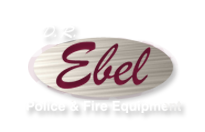Code 3 Lightbar
Law enforcement and medical first response vehicles frequently maneuver at high speeds. To minimize danger to the vehicle’s operators and other drivers on the road, the vehicles in these industries are equipped with lightbars. A Code 3 lightbar is one lightbar such vehicles might be equipped with.
Depending on the vehicle’s primary usage, it may also be outfitted with beacon lights, mini lightbars, dash flashers, a visor sign, wingsmirror flashers, griller flashers, “wig-wag” headlights and LED reflectors, as well as noise making devices like sirens and horns.
Emergency vehicle lighting, including the Code 3 lightbar line, is used to clear the way for a medical first response vehicle responding to the scene of an accident or transporting a critical patient. In law enforcement, emergency vehicle lighting such as a code 3 lightbar may be used in the pursuit of a criminal into dark areas such as alleys and fire escapes, to alert motorists that they’re approaching an accident scene, disabled vehicle or construction zone. Officers also use them to initiate traffic stops and lead processionals for parades and funerals, among other things.
The characteristics of the lights, including those on a Code 3 lightbar, effect the overall look of the vehicle and its ability to gain the appropriate attention for the situation. All lightbars, including a Code 3 lightbar, feature either a light bulb or an LED, or light emitting diode, which ‘flash’ in distinct patterns.
Some lightbars are equipped with rotating lights. In the case of a beacon, a small rotating light contains one bulb around which a curved mirror spins, mimicking the effect of a flash. Larger ligthbars that utilize rotating lights, like the Code 360, LP 6000, XL 5000, MX 7000 and Excalibur Code 3 lightbar models, contain multiple modular or sealed-beam lamps which rotate together.
The lights in lightbars are protected, usually by a plastic covering which dictates the color of the light displayed. Typical colors include red, green, blue, yellow or clear (which allows for white light). Different colors are used for different vehicle purposes. For example, a tow truck is usually equipped with amber light coverings to caution other motorists that there’s a tow in progress. Police cars are usually equipped with lightbars with red, white and blue coverings, like the Code 360 Code 3 lightbar. Ambulances feature red and clear, and sometimes amber light coverings.
Some lightbars, like the 2100, FM 9000, RX 2700CC, Opticom and Defender models in the Code 3 lightbar line, are LED models. LED lights are energy-efficient and have a very long life, so they are gaining in popularity in the emergency response industry.
Contrary to the lightbars which feature rotating lights like the XL5000 Code 3 lightbar, LED-based lightbars feature a clear protective coloring. The color of the light emmited by the light depends on the light-emitting diode itself—the color is ‘built-in’.
Another benefit of the LED lightbars is that they can be built on a much thinner scale than traditional rotating light lightbars, making the vehicle they’re mounted on much more low profile. And, because they’re switched directly by electronics, they have a greater flash pattern availability which can also be modified to add flashing and strobe effects. LED lightbars are also much brighter. Take the Defender Code 3 lightbar for example. The Defender Code 3 lightbar is two to two-and-a-half times brighter than any lightbar at key 45 and 60 degree intersection angles.
D.R. Ebel is a certified supplier, installer and repairer of lightbars of all types and purposes of use, including the Code 3 lightbar line.
